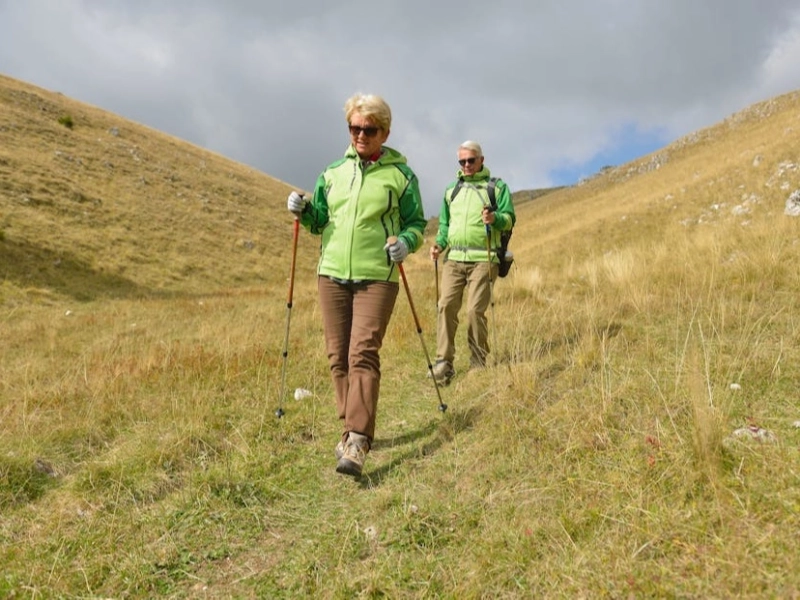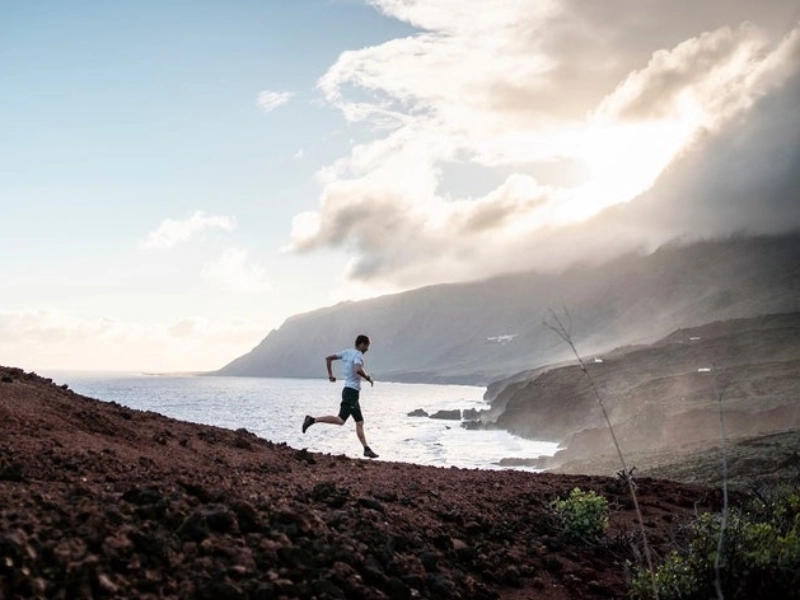Whenever we think about exercise, we automatically think of physical well-being. But mental activity is also necessary. Long descents can seem rejuvenating to a lot of runners, hikers, and trail aficionados. However, if done too quickly, downhill exercises can cause joint and muscular pain since they put a lot of strain on the extensor muscles in the knee and hip.

 Exercise, particularly regular downhill running, has been demonstrated in longitudinal studies to enlarge the hippocampal and prefrontal cortical regions of the brain. This may postpone or even stop the emergence of neurodegenerative disorders like Alzheimer's and help guard against the typical cognitive loss that comes with aging.
Because of the eccentric muscle contractions that elongate the muscles under load, trail runners, skiers, and snowboarders experience a particular strain on their bodies during their downhill runs. Just picture those race images when the quad muscles are stretched out like a bow and arrow. Trail runners and skiers can practice core engagement, looking down the trail, and fast turnover to lessen the stress of working uphill.
Exercise, particularly regular downhill running, has been demonstrated in longitudinal studies to enlarge the hippocampal and prefrontal cortical regions of the brain. This may postpone or even stop the emergence of neurodegenerative disorders like Alzheimer's and help guard against the typical cognitive loss that comes with aging.
Because of the eccentric muscle contractions that elongate the muscles under load, trail runners, skiers, and snowboarders experience a particular strain on their bodies during their downhill runs. Just picture those race images when the quad muscles are stretched out like a bow and arrow. Trail runners and skiers can practice core engagement, looking down the trail, and fast turnover to lessen the stress of working uphill.
 Any trail runner will tell you that using distinct muscles for uphill and downhill running or walking is necessary. Eccentric muscular contraction is what happens, for example, when you run downhill and your quads and calves extend to bear the force of each stride. That's why your legs could hurt after a lengthy descent in a race—this kind of activity damages muscles more than concentric strength training.
The good news is that if you use excellent technique during your exercises, you can reduce the negative consequences of downhill training. Controlling your gait is one of the most crucial things you can do. If you have a propensity to lengthen your stride, you may brake and wind up with knee soreness. Instead, concentrate on taking quick, precise steps that are near to your hips.
These exercises will also strengthen your glutes and butt, which are larger and more powerful than your quadriceps. This will lessen the strain on your joints and muscles so you may run downhill without worrying about your knees giving out.
Any trail runner will tell you that using distinct muscles for uphill and downhill running or walking is necessary. Eccentric muscular contraction is what happens, for example, when you run downhill and your quads and calves extend to bear the force of each stride. That's why your legs could hurt after a lengthy descent in a race—this kind of activity damages muscles more than concentric strength training.
The good news is that if you use excellent technique during your exercises, you can reduce the negative consequences of downhill training. Controlling your gait is one of the most crucial things you can do. If you have a propensity to lengthen your stride, you may brake and wind up with knee soreness. Instead, concentrate on taking quick, precise steps that are near to your hips.
These exercises will also strengthen your glutes and butt, which are larger and more powerful than your quadriceps. This will lessen the strain on your joints and muscles so you may run downhill without worrying about your knees giving out.
 Running downhill is really better for the knees than running uphill, which is harder on them. Your quads and calves contract eccentrically each time your foot strikes the ground when you're walking downhill. During this contraction, the muscle lengthens, which is advantageous because it lessens the strain on your joints—especially your knees—and helps absorb impact.
It takes more strength and control to walk downhill than it does to go uphill or on level ground. But if your leg muscles aren't strong enough to withstand the impact of repeatedly stretching and then contracting your quadriceps, your legs or knees can hurt or you might have delayed-onset muscular soreness (DOMS).
It's crucial to start downhill walking gradually and only when you are comfortable with your form and body alignment in order to reduce this risk. You can learn how to walk downhill without hurting your knees or other joints by working with a physical therapist. They can also suggest strength training activities to help you develop the muscles needed to power through those protracted descents.
Running downhill is really better for the knees than running uphill, which is harder on them. Your quads and calves contract eccentrically each time your foot strikes the ground when you're walking downhill. During this contraction, the muscle lengthens, which is advantageous because it lessens the strain on your joints—especially your knees—and helps absorb impact.
It takes more strength and control to walk downhill than it does to go uphill or on level ground. But if your leg muscles aren't strong enough to withstand the impact of repeatedly stretching and then contracting your quadriceps, your legs or knees can hurt or you might have delayed-onset muscular soreness (DOMS).
It's crucial to start downhill walking gradually and only when you are comfortable with your form and body alignment in order to reduce this risk. You can learn how to walk downhill without hurting your knees or other joints by working with a physical therapist. They can also suggest strength training activities to help you develop the muscles needed to power through those protracted descents.